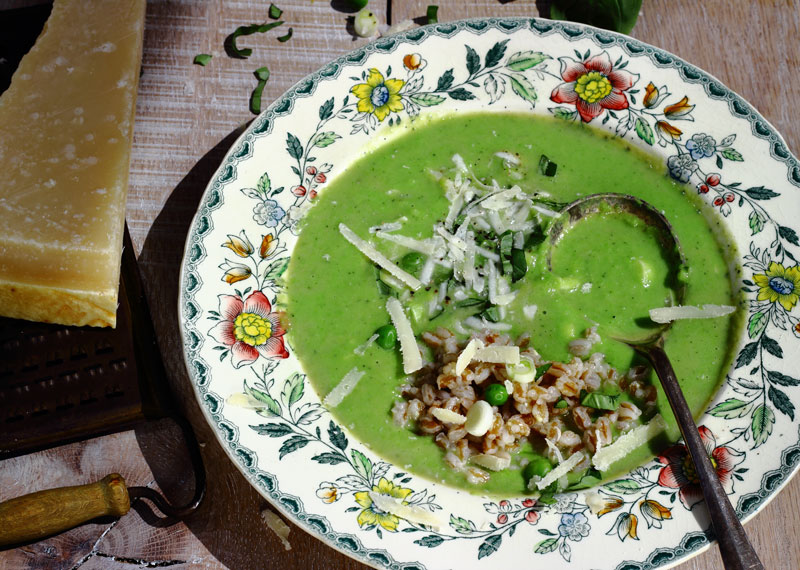OK … thinning hair may seem frivolous in the context of degenerative disease, but when your crowning glory starts falling out in handfuls, just because you’ve reached that age, a girl needs to take action. Hair loss is a typical symptom of ageing – and I’m no exception. I should point out that I’ve never had thick, heavy hair and neither has anyone in my family – so genetically I’m probably predisposed to thin, fine hair. But now I know I can change my genes (see my last posting on How to Change Your Genes) I’m damn well going to try!
So, today Kale and Cocoa launches Project Hair (that’s the Annabel half as Susan still has gorgeous, tumbling locks). Over the coming year, I’m going to look at boosting hair growth from the inside (nutrition and supplements) and from the outside (products that claim to stimulate regrowth) and I’ll report back regularly on what’s working – and what’s not.
Experts agree that good diet is essential – iron, zinc, vitamins B, C, E, lysine, essential fatty acids and protein all play a big part. Silicon and iodine are also important. But what all the hair-growth supplements really bang on about are iron and biotin. My two friends who’ve visited famous tricologists were both prescribed iron and biotin. Biotin, also known as Vitamin H, is found in peas, chard, mushrooms, various nuts and seeds, sardines and many other food sources.
As well as providing plenty of biotin, peas also contain protein, Omega-3, vitamin C, zinc and iron – making them a go-to ingredient for anyone wanting thicker hair. Farro contains large amounts of iron as well as protein and zinc.
The recipe below is for a chilled soup but it works just as well warm. It’s super-fast (particularly if you roast the garlic in advance) and the inclusion of farro makes it a meal on its own. The large amount of roasted garlic and the spring onions make it great for boosting immunity, the parmesan adds a little more biotin and the yogurt adds probiotics. I use frozen petits pois because they’re always in my freezer and I rarely have time for podding (who does?).
One final thing on hair. For the last two months I’ve been trialling the ‘Reverse Conditioner ‘ method of hair-washing. This doesn’t increase the actual volume of your hair, but it certainly makes it look bigger. Even Carnivorous Husband has noticed and commented (only when prompted obviously!), so I’m sticking with it. How does it work? You condition your hair before you shampoo … that’s all. It feels odd at first, and it makes your hair less easy to comb but it takes away the lankness. You can read about it here: http://www.dailymail.co.uk/femail/article-2595519/The-secret-perfect-hair-Use-conditioner-BEFORE-shampoo.html . A friend of mine who’s also been experimenting with this technique says it reduces the shine on her hair, but I don’t think my hair ever had much gloss – so I’m happy to sacrifice sheen for body. Try it and let us know what you think….
CHILLED PEA AND ROASTED GARLIC SOUP WITH FARRO, BASIL AND PARMESAN
Serves 6
- 700g frozen petits pois (plus 2tbsp for decoration)
- 1 bunch basil, chopped
- 1 head roasted garlic (I roast it at 180 for 30 mins in foil while other things are cooking and then store in the fridge until needed)
- 700 ml vegetable stock (Marigold is fine or use water that you’ve cooked veggies in)
- 1 bunch spring onions (8-10 but keep 2-3 aside for decoration), chopped
- 8 tbsp yogurt
- 120g farro, cooked as per packet instructions and cooled
- Grated parmesan to serve
Fry the chopped spring onions in a tsp of olive oil for two minutes until soft. Add the frozen peas and cover with 700 ml of boiling stock. Turn the heat off and add the garlic by squirting them from their skins. Add most of the basil, leaving some for decoration. Liquidise and leave to cool.
When ready to serve, divide the farro between 6 bowls, pour over the soup and top with thickly grated parmesan, chopped basil, sliced spring onions and a few whole peas.
Annabel



I have the thin, lank hair problem! Drives me crazy that. I have to wash it every day or it looks really thin and terrible! Love the recipe and have never heard of farro so will look it up. Need to try it without onions as a fodmap exercise. X
Hi Clare, please do try the reverse conditioner method – it makes such a difference. We’re obsessed with faro – hope you find some and enjoy it as much as we do!
*farro – thank you spell check!
Have you come across anything about wheat causing leaky gut, which contributes to Alzheimer’s? That’s what I recall from the book by Bredesen (“Bedesen”? I have trouble keeping his name straight) , which would make farro undesirable.
What about quinoa instead? Does it have iron and zinc, too? I’ve heard it’s the only grain that is a complete protein.
Yes, farro is wheat. And you are right about quinoa. You can make the soup without farro or quinoa if you prefer. You could even add a little flax instead (ground linseed) which is highly nutritious, although not sure how it would taste!
thank you so much for featuring Kale & Cocoa – it means a lot to us!